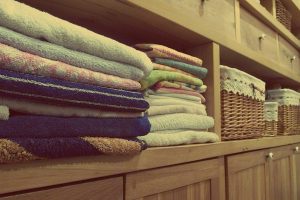How Silk Can Improve Your Skin Quality

Silk has been a luxury ever since people began naming major highways after the textile two thousand years ago. While the name is synonymous with luxury, though, silk has more qualities than mere extravagance.
Silk also has a growing reputation as a tool to help with managing skin problems. Some of this reputation comes from scientific study and proof, while other aspects are still undergoing research and require more time to flesh out. Here is a quick breakdown of how silk can help improve not just your style but the quality of your skin.
Silk Is a Beauty Tool, Not an Ingredient
Before diving into the specifics, it’s important to clarify something. We’re talking about silk as a beauty tool, not an ingredient. That’s to say, silk isn’t something you might find included in an ointment or salve. The subject in question is the textile used to create a variety of apparel and household items.
A popular silk accessory is a pillowcase. This is a huge beauty and skincare item for several reasons — most of which are outlined below. However, you can also use anything from silk scrunchies and head coverings to full-blown sets of silk pajamas.
Why point this out? Because the modern obsession with skincare doesn’t tend to focus on tools too often. Instead, when a skincare “product” comes up in conversation, it conjures images of goopy creams and lotions.
The cosmetics industry is largely to blame for this. Too often brands and labels focus on pumping out an endless string of lotions, serums, and other topicals.
These ointments and tinctures have a ton of ingredients, many of which are difficult to pronounce, let alone understand. For instance, certain eyelash serums have come under fire for using the growth hormone prostaglandin. This can lead to several negative side effects including eye irritation, hyperpigmentation, and even a darkening of the eye color.
In other words, throwing an endless string of unpronounceable synthetic mixtures into your skincare routine isn’t always the best option. Sometimes, you need to look for a natural tool like silk to help without causing additional harm.
But How Does Silk Help With Skincare?
The question that naturally remains is how silk helps maintain healthy skin. How does sleeping on a silk pillowcase — a particularly popular skincare option at the moment — improve the quality of your skin? There are certain silk benefits that tend to be brought up the most often.
Silk is Hydrating
The primary claim here is hydration. Silk doesn’t absorb moisture well. Its tightly woven threads resist water, especially compared to cotton and other common fabrics. By sleeping on a silk pillow, it tends to avoid the common issue of wicking moisture away from your face and into your pillowcase.
Instead, your facial skin maintains a good amount of its moisture. This can be a great way for those with dry skin to stay moisturized.
Using a silk pillowcase also means expensive skincare treatments and lotions remain where they’re supposed to be: on your face helping your skin maintain its lustrous shine. When you use a cotton pillowcase, it’s too easy for topical creams to end up smeared into the fabric, leaving oil stains behind and not doing your skin any favors.
Silk Has Antibacterial Properties
A less well-founded, yet possible benefit to silk as a skincare tool is that it’s simultaneously antibacterial and gentler on the skin.
As far as the antibacterial claim is concerned, it’s well-known that silk has antibacterial properties on a micro-level. However, it isn’t certain if this benefit impacts the skin that it comes in contact with.
If this is true, though, it would mean the pillowcase doesn’t accumulate bacteria as rapidly as a cotton alternative. If that’s the case, the lack of dirt and bacteria could avoid exacerbating acne issues.
Silk is Gentler on Skin
The other, easier-to-prove claim is that silk is gentler on the skin. The textile’s smooth, frictionless — dare we say silky — appearance doesn’t pull on hair or skin as much as a traditional pillowcase might.
This lack of friction prevents irritation. Many also assume that it prohibits creases from forming during sleep.
While these creases are temporary and stretch out after waking, over time they can impact long-term wrinkles. By using silk, you reduce the amount of friction pulling on your face and stretching your skin — and all without using an expensive skincare serum or ointment.
Now, this benefit comes with one important clarification. The “less creases” theory is true for those who sleep on their stomach and sides, in particular. At least, it’s relevant if you’re talking about skin. After all, when you’re on your back, your face isn’t in contact with your pillow. As such, your skin shouldn’t stretch or scrunch in any significant way.
Even so, if you’re on your back, that means the back of your head is on the pillow. When that happens, your hair may be losing moisture and suffering from friction as well. When that happens, it once again makes silk an alluring option to avoid any damage to your doo.
Silk is a great skincare option that has been attracting a growing crowd of enthusiasts. Its natural appeal is hard to argue with. The fact that using silk doesn’t require smearing synthetic substances all over your face day in and day out is another great plus. It also is a one-and-done purchase that doesn’t require refills on a regular basis (just make sure you hand wash your silks or, at the most, wash them on the gentle cycle so that they last.)
Silk is here to stay as a beauty and hygiene agent. While the specifics about its impact on skincare are still being fleshed out, there’s no doubt that the wonder textile does, in fact, have a genuine impact on the quality of countless people’s skin. Add in the fact that it gives off that luxurious self-care vibe and everything from a silk pillowcase to silk headscarf and even a complete set of silk pajamas can work their way into anyone’s cosmetics toolkit.






